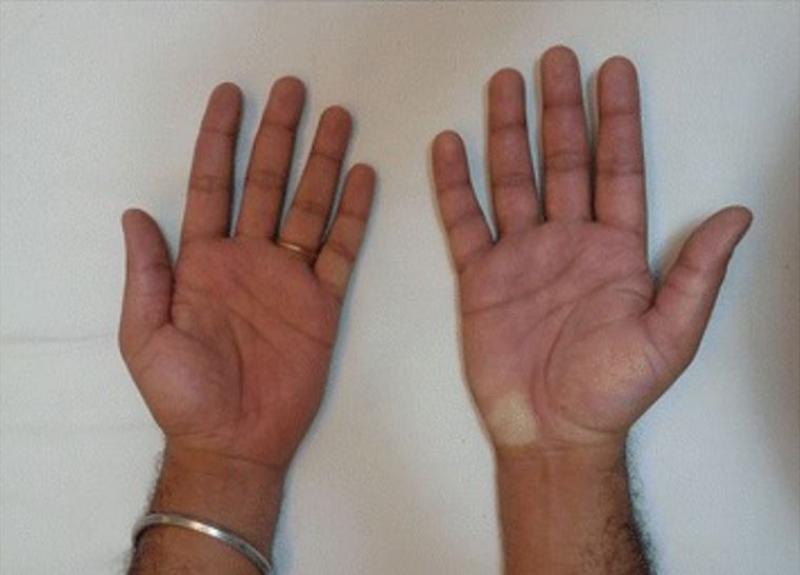Complex Regional Pain Syndrome (CRPS) is a chronic condition characterized by severe, persistent pain often affecting an arm or leg following an injury or trauma. This syndrome can cause a range of symptoms including burning sensations, swelling, changes in skin color and temperature, and decreased mobility in the affected limb. The pain experienced in CRPS is disproportionate to the initial injury and may result in significant impairment in daily functioning. Understanding the clinical presentation, underlying pathology, and current treatment options is crucial for patients and healthcare providers navigating this challenging condition.
Key Causes and Progression of Complex Regional Pain Syndrome
CRPS primarily develops after nerve damage or injury, such as fractures, surgery, or immobilization. The exact pathophysiology remains complex, involving abnormal nerve responses, inflammation, and central nervous system sensitization. Initially, inflammatory processes cause redness, warmth, and swelling, but as the condition progresses, patients may experience cold, pale skin due to altered blood flow regulation. Neurological changes lead to heightened sensitivity, making even light touch excruciating. The disease progression is typically categorized into stages, although not all individuals go through every phase. Early diagnosis and intervention are essential to prevent long-term disability, as prolonged CRPS can lead to muscle atrophy, joint stiffness, and permanent changes in sensation.
Advanced Diagnostic Techniques for Precise Complex Regional Pain Syndrome Identification
Diagnosing CRPS can be challenging because its symptoms overlap with other neurological or musculoskeletal disorders. A thorough clinical evaluation forms the cornerstone of diagnosis, focusing on pain characteristics, sensory abnormalities, and autonomic symptoms. Additional diagnostic methods such as bone scans, thermography, and magnetic resonance imaging (MRI) can assist in confirming the diagnosis and ruling out other conditions. Quantitative sensory testing (QST) helps evaluate nerve function and pain thresholds. Early identification using combined clinical and imaging approaches improves the chances of effective treatment outcomes. Patients experiencing persistent limb pain following an injury should seek specialized assessments to clarify if CRPS is the underlying cause.
Comprehensive Treatment Modalities Focused on Complex Regional Pain Syndrome Relief
There is no universal cure for CRPS, but a multidisciplinary approach combining physical therapy, pharmacological treatments, and psychological support is often most effective. Physical therapy aims to maintain joint mobility and prevent muscle wasting by encouraging gradual movement and desensitization techniques. Medications such as corticosteroids, antidepressants, anticonvulsants, and nerve pain agents are frequently utilized to control inflammation and neuropathic pain. Emerging interventions, including nerve blocks, spinal cord stimulation, and ketamine infusions, offer additional relief for refractory cases. Psychological factors such as anxiety and depression frequently accompany CRPS, making cognitive-behavioral therapy a valuable component of comprehensive care. Personalized treatment plans tailored to symptom severity and patient response are critical for improving quality of life.
Market Trends and Future Outlook for Complex Regional Pain Syndrome Therapies
The field of CRPS treatment is evolving rapidly, driven by ongoing research and innovation. Recent clinical trials focus on developing targeted biological therapies and advanced pain management devices to reduce side effects and enhance efficacy. Increasing awareness about CRPS among healthcare professionals and patients contributes to early diagnosis and better management strategies worldwide. Market dynamics indicate a growing demand for novel pharmacological agents and minimally invasive procedures, reflecting an unmet need in this patient population. The expansion of rehabilitation services and integrative pain management programs is reshaping the therapeutic landscape. Stakeholders tracking pain management market trends should consider these developments to identify emerging opportunities in CRPS care.
Exploring Detailed Reports on Complex Regional Pain Syndrome Treatment Landscape
Comprehensive market analysis reports provide valuable insights into the competitive landscape, therapy pipeline, and key market drivers within the CRPS treatment domain. These detailed studies include evaluations of current treatment standards, emerging innovations, and regional variations in care accessibility. Access to robust market intelligence facilitates strategic decision-making for pharmaceutical companies, healthcare providers, and investors focused on chronic pain syndromes. Coverage often extends to patient demographics, financial burden, and regulatory frameworks influencing the availability of new therapies. Individuals and organizations looking to deepen their understanding of the CRPS therapeutic environment can benefit from reviewing specialized industry research outlining growth forecasts and market segmentation.
Get This Report In Japanese language: 複合性局所疼痛症候群
Get This Report In Korean language: 복합 지역성 통증 증후군
Read more articles related to this industry:
Application of Technology by Pharmaceutical Firms to Improve Medical Compliance
About Author:
Money Singh is a seasoned content writer with over four years of experience in the market research sector. Her expertise spans various industries, including food and beverages, biotechnology, chemical and materials, defense and aerospace, consumer goods, etc.
(https://www.linkedin.com/in/money-singh-590844163)
